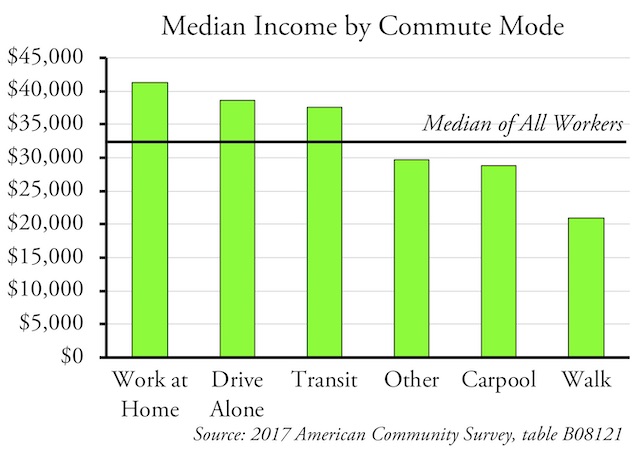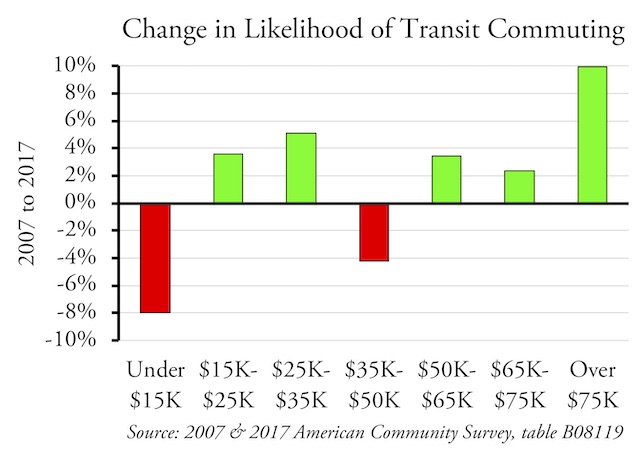The Census Bureau’s 2017 American Community Survey revealed that, for the first time since the Census Bureau began keeping track of such data in 1960, the median income of transit commuters has risen above the median income of all American workers.
One reason transit commuter incomes have risen is that low-income transit riders are giving up on transit. Thanks to a growing economy, the number of people who earn less than $15,000 a year has declined, but the number of transit commuters who are in that income bracket has declined even faster, so that low-income commuters are 8 percent less likely to use transit than they were a decade ago. Meanwhile, people earning more than $75,000 a year were 10 percent more likely to commute by transit in 2017 than in 2007. Continue reading










